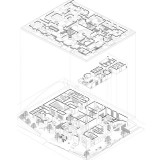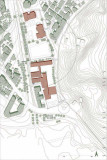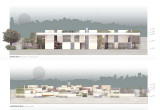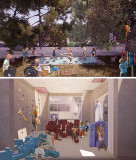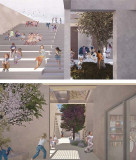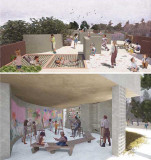Play is a highly diverse, abstract, kinetic, or mental activity, in which players create a temporarily real world for themselves, a strictly defined spatial experience, which is either completely imaginary or facilitated by using materials. In the modern urban landscape, free, unstructured play gradually began to be stigmatized and suppressed, and the spaces that can accommodate it are diminishing.
With the aim of redefining play spaces, adventure playgrounds are being further studied. These are open, fenced play spaces equipped with tools and materials that may seem useless. This paradoxical model of a playground was implemented for the first time in the ruins of a bombed landscape in Denmark in 1943 and met with great success. It was proposed in many European cities as a component of post-war urban regeneration. Despite the obstacles and concerns it raised to parents, it succeeded in many cases worldwide over time. This space offers children the opportunity to appropriate and alter their environment. This play space stimulates creativity, encourages children to face challenges, and promotes carefree, imaginative play, with the least possible constraints.
In this diploma thesis, the integration of key features of an adventure playground are explored in the design of a building that meets modern requirements and safety regulations. A Center of Creative Activities and Play, which operates with the purpose of caring for and creatively engaging children by educators after school, seemed like the ideal choice to house this project. The intervention area is a lush plot in Volos, near the hill of Goritsa and the Anavros stream. The building is composed there with alterable equipment and walls, allowing the natural landscape to penetrate. It includes play spaces, study areas, and spaces for creative workshops, and organized activities. The building is intended to be altered by the children as it is considered their play place, as well as a place for culture, recreation, and creation.
